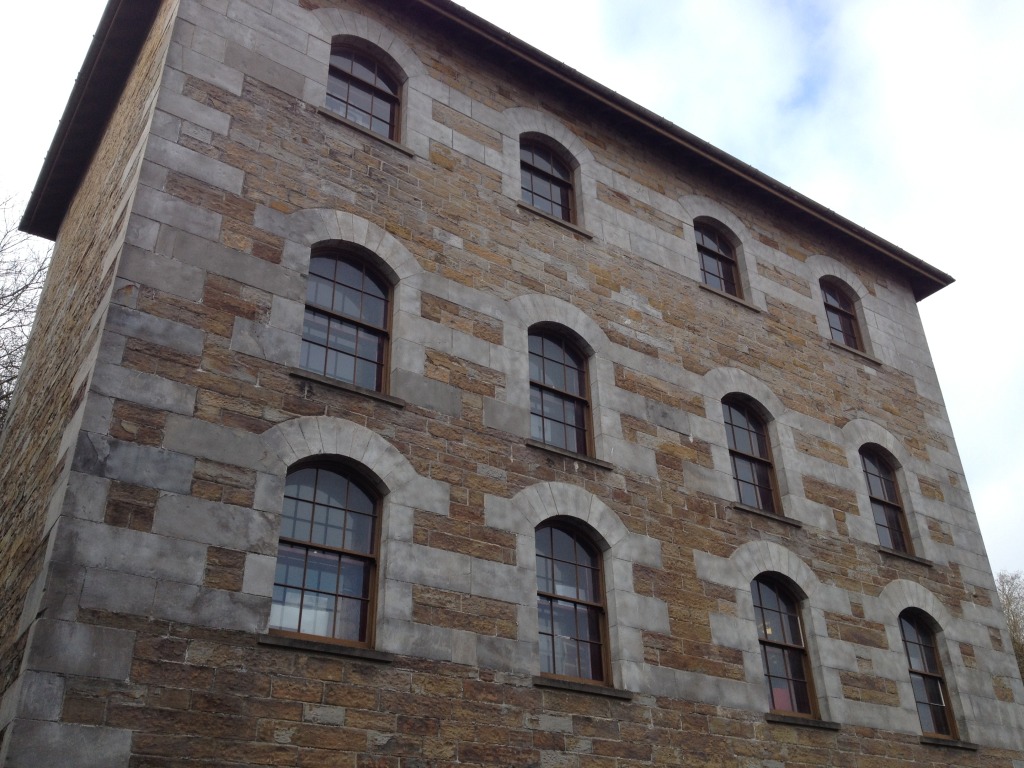12th February 2015 – Meeting at the restored Ynysfach Engine House.
The Engine House was one of a pair of Engine Houses on the Ynysfach Ironworks site. ‘The Glamorgan-Gwent Archaeological Trust Ltd undertook investigations at Merthyr Tydfil College, on the site of the former Ynysfach Ironworks, which began in August 2011 and were completed by January 2012. Archaeologists from the Trust excavated and recorded structures belonging to the former ironworks, which had survived unexpectedly well, buried underneath the college buildings’.
To see the amazing animated 3D reconstruction of the site. produced as part of the interpretation for the project, press on this link. A permanent exhibition of this project can be seen at The College, Merthyr Tydfil, which is built upon this site.

I met withSteve Brewer & Ceinwen Statter , members of the Merthyr Tydfil Historical Society, who operate out of the recently restored Engine House of the former Ynysfach Iron Works. Mary Owen – Author of book on the New Rectory of Merthyr Tydfil, was mentioned as someone who may have some insight on Swan Street history. Clive Thomas, the author of a history of Cae-Draw School, was also mentioned. The Merthyr Tydfil Historical Society also publish the Merthyr Historian, which is a 26 Volume history of the town from every source possible. Published from 1976 to the present, it has some engaging and surprising stories, records & contributory essays and images from many individuals. A great resource document ! A set of these publications is available in the Merthyr Tydfil Library.

http://www.alangeorge.co.uk/
The site of the former Ironworks is now mostly occupied by The College, Merthyr Tydfil, the original ironworks being demolished and lost before and during the 1960’s.

http://www.alangeorge.co.uk/
Alan George, a local historian who’s website ‘Old Merthyr Tydfil‘ is a brilliant repository of old images of the town and a fantastic resource, also attended the meeting.
We discussed the site specific history of the new Bus Station site on Swan Street and references to a building called ‘The Rectory’, which is show on old OS Maps, but is not referred to in any written text I can find. Alan and his colleagues are assisting in researching this. The wider area around Swan Street is also rich in history and community, which needs to be addressed in this contextual study.


The new College site – although first developed in the 1960’s – is historically relevant to the Link Bridge project, as not only was this the site of the Ynysfach Ironworks, part of the Cyfarthfa Ironworks, but the public realm and highway in front of the College and in-between it and the River Taff, was the site of the Glamorganshire Canal. There was a Lock Gate here, called Parliament Lock. An Archaeological Report was made by the Glamorgan-Gwent Archaeological Trust (Contracts Division) to support the Archaeological Watching Brief on Parliament Lock during pipe laying works in October 1995. The Report was prepared for Ove Arup & Partners who carried out the works.The report is really interesting. – click on Parliament Lock, above –

Parliament Lock Gate and House is in the bottom right foreground of this image of the Glamorganshire Canal. The bridge, seen at the middle far right of this image, is the Ynysgau Iron Bridge across the River Taff, built in 1799 by Watkin George for the Cyfarthfa Ironworks.

Reproduced from the 1876 Ordnance Survey Map. Collection of Merthyr Tydfil CBC Libraries.
